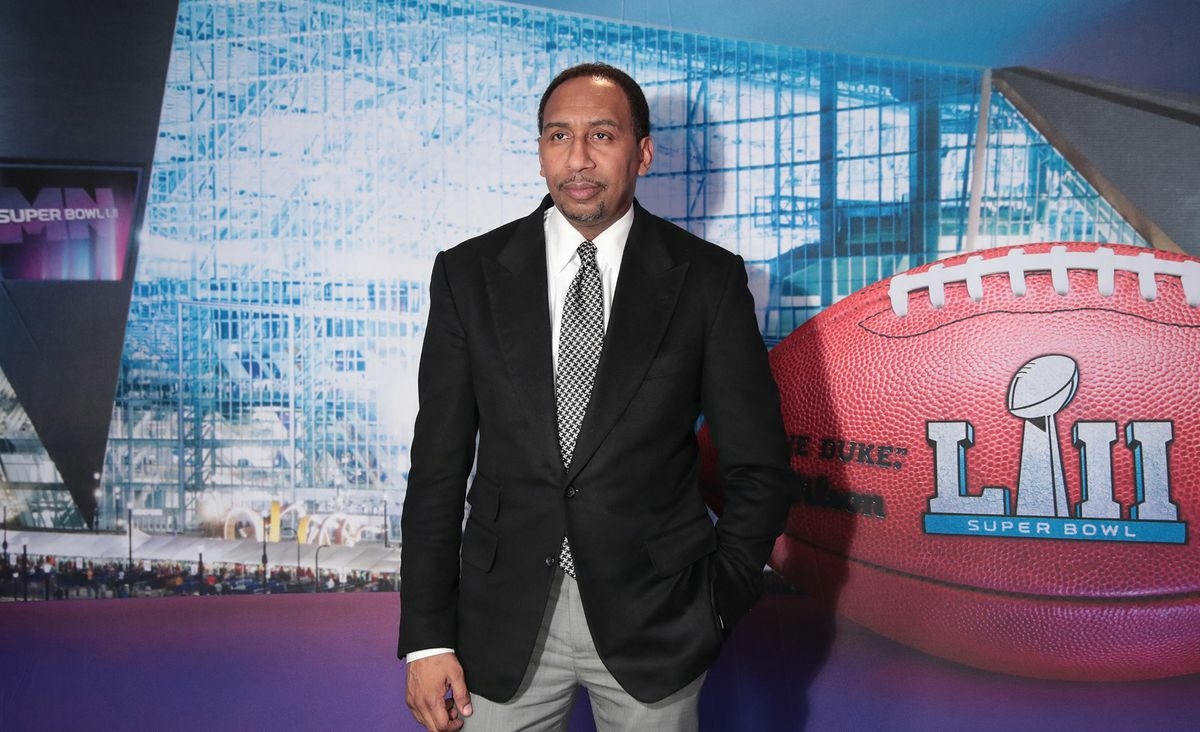The Big Ten conference recently announced a new seven-year media rights deal worth more than $ 7 billion with three networks. Fox, CBS and NBC will host league football matches starting in the fall of 2023, along with FS1, Peacock and Big Ten Network. Fox is set to remain the main partner of the Big Ten broadcast. ESPN, B1G’s broadcasting partner since 1982, was not among them.
While some are positioning the imminent breakup as the latest victim of the “war” between ESPN and Fox, former Fox Sports Networks president Bob Thompson said the narrative was simply wrong. “It’s just business,” he tweeted on August 9. Each network is trying to “get the best position [themselves] for a slice of the next iteration of CFP playoffs.”
Both companies declined to comment.
JWS ‘Take: ESPN-Fox’s war hyperbole is fueled by another incorrect narrative – that two networks are at the forefront of change and anticipated consolidation in college sports. “It’s easy for someone sitting far away to assume that Fox and ESPN are puppet masters and that these conference commissioners are on the strings,” Thompson told Sportico. “It’s just not like that. Commissioners, presidents, chancellors and, to a lesser extent, sports directors are the ones who initiate these movements. “
Sure, it could be argued that TV money influences their decisions. However, Thompson was clear that this was not a “bribe-type situation”. Each network “pays for packages it hopes will bring some value, and when it comes to the extended playoff [all] want a seat at the table,” he said. Logic suggests that the more Power Five representation a network has during the regular season, the more likely it is to receive extended out-of-season broadcast rights.
Of course, conferences, including B1G, also benefit from multiple networks applying for the College Football Playoff’s extended rights. “The NFL game sharing model will be the optimal model for CFP to maximize their dollars,” said Thompson. Revenues from CFP go to individual conferences.
Last time, ESPN was the only real home to the CFP. “Fox didn’t even look at it,” Thompson said. The CFP granted ESPN exclusive rights to its postseason in November 2012. Although Fox had the rights to the Big 12 and Pac-12 at the time, he didn’t take control of half of the Big Ten broadcast rights, which made it a college football destination until 2017. The company “was not thrilled with the playoff format,” he said.
While it has been suggested that “Fox screwed ESPN,” moving behind the scenes to cut off the cable broadcaster, Fox reportedly wanted ESPN to have a slice of the package. “It speaks in terms of where there is a real war. It is located between B1G and ESPN or B1G and SEC. But it’s not [between] ESPN and Fox, ”said Thompson.
Yes, there is healthy competition between the two networks, but there is also some collegiality. “It’s not” we hate these guys, “said Thompson. “[ESPN] does what they do for their business and the guys at Fox do what they do for the good of their business.”
There is also “a lot of collaboration that people are unaware of,” said Thompson. The existing Pac-12 and Big 12 rights packages, which are shared between ESPN and Fox, were “negotiated jointly” by John Skipper and Randy Freer, he said.
And while the two executives no longer deal with ESPN and Fox Sports respectively, companies still “call every Monday to find out who is picking which game,” Thompson said. “You’d be surprised how much swaps or sports trading are going on in these mergers.”
Both companies also established joint ventures. “We’ve had an Asian sports network called Star Sports with ESPN for years,” said Thompson. Former “members of the board of News Corp as well as members of the board of ESPN.”
The Big Ten is said to have been less than thrilled with ESPN’s perceived SEC bias, but the world leader in sports did not consider retaining conference rights – almost twice as much money to play – as mission-critical. Remember that ESPN recently signed a 10-year contract with the Southeast Conference for a premium gaming package that was available on CBS at 3:30 PM. ET window to go along with the rest of your rights. His place at the extensive negotiating table of the CFP is secure.
The relegation between the Big Ten and ESPN began in 2006, said Thompson, under the leadership of Jim Delany, the previous head of the conference. “Jim Delany initially spoke to ESPN about the B1G network and they were not interested,” said Thompson. “Then [ESPN] went to make a rights deal, and [the offer] offended Jim greatly. This is what caused him to contact us, and from there came the contract with B1G Network, then the contract with B1G Championship, and then the contract with Fox Network. This is not Fox versus ESPN. “
One wonders if B1G will lose relevance without its ESPN games. With the network denied NHL rights, hockey events dwindled at SportsCenter.
But with matches being broadcast on three broadcasting networks every Saturday, future exposure doesn’t seem to be a problem for Big Ten football.
However, given ESPN’s oppression of another major intercollegiate sport, this could have an impact on the perception of B1G basketball. Thompson predicts ESPN will find a way to sublicense a number of B1G basketball games.
Ten of the thirteen founding members have remained with the conference since its inception: University of Alabama, Auburn University, University of Florida, University of Georgia, University of Kentucky, Louisiana State University (“LSU”), University of Mississippi (“Ole Miss”), State Mississippi …
What is the hardest Big 10 school to get into?
Acceptance Rate: Northwestern is not only the smallest school in the Big Ten – it is also by far the most selective. You will need high ratings and standardized test scores to get there. Michigan is also very selective, especially for public institutions.
What are the 3 most difficult schools to get into? On the same subject : Business Alumni Conference @ Marilyn Davies College of Business.
Which Big Ten school is best academically?
Northwestern University is the top-rated Big Ten school at the conference which is academically and athletically dominant.
What is the biggest Big 10 school?
Comparing Big Ten Schools, Penn State has the highest number of undergraduate enrollments – nearly 46,000. Read also : Global public health foresight strategies: a practical guide for WHO staff. Northwestern has the lowest 8,327.
What is the toughest school to get into?
Presentation: 25 of America’s Toughest Colleges See the article : Academic minute | How diet and lifestyle can optimize mental well-being.
- 1 Stanford University. Geri Lavrov. …
- 2 Harvard University. Photo: Lisi Cai. …
- 3 California Institute of Technology. Voltaire. …
- Princeton University. objective. …
- 5 Massachusetts Institute of Technology. …
- 6 United States Naval Academy. …
- 7 University of Chicago. …
- 8 Yale University.
What are the original Big 10 schools?
The seven original members of the conference are: University of Chicago, University of Illinois, University of Michigan, University of Minnesota, Northwestern University, Purdue University, and the University of Wisconsin. December 1, 1899: Indiana University and the State University of Iowa are accepted for membership.
Which teams were added to the Big Ten? USC and UCLA caused the latest seismic shift in university soccer redevelopment by announcing that they would be joining the Big Ten conference in 2024.
Who were the original schools in the Big 10?
Big Ten Conference, formerly the Western Intercollegiate Conference, one of the oldest college sports conferences in the United States, established in 1896 by the universities of Chicago, Illinois, Michigan, Minnesota, and Wisconsin and Purdue, and Northwestern universities.
What schools left the Big Ten?
Full coverage: USC, UCLA leave Pac-12 to join Big Ten USC and UCLA are leaving Pac-12 for the Big Ten conference in 2024, both schools announced Thursday.
Which Big Ten school is the best?
Northwestern University is the top-rated Big Ten school at the conference which is academically and athletically dominant. On November 19, 2021 at 9:00 a.m. Big Ten ranks high in the rankings.
Are Big Ten schools good? Big Ten schools enjoy great academic recognition. Northwestern is ranked 9th by National University by US News. The rest of the Big Ten schools are considered to be among the best public universities in the country.
What are Big 10 schools known for?
Typically, Big Ten schools are known to be large institutions with competitive sports programs and great school spirit.
Which Big 10 school is the best?
See the best Big Ten Schools rankings. Northwestern University is the top-rated Big Ten school at the conference which is academically and athletically dominant.



